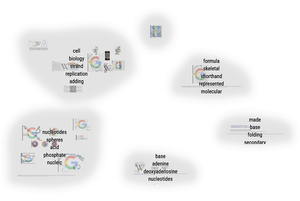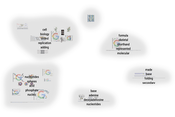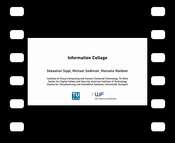Information
- Publication Type: Technical Report
- Workgroup(s)/Project(s):
- Date: August 2019
- Number: TR-193-02-2019-2
Abstract
Knowledge workers, such as scientists, journalists, or consultants, adaptively seek, gather, and consume information. These processes are often inefficient as existing user interfaces provide limited possibilities to combine information from various sources and different formats into a common knowledge representation. In this paper, we present the concept of an information collage (IC) -- a web browser extension combining manual spatial organization of gathered information fragments and automatic text analysis for interactive content exploration and expressive visual summaries. We used IC for case studies with knowledge workers from different domains and longer-term field studies over a period of one month. We identified three different ways how users collect and structure information and provide design recommendations how to support these observed usage strategies.Additional Files and Images
Weblinks
- arXiv report
Technical Report at arXiv - Entry in the publication database of TU-Wien
BibTeX
@techreport{2019-ic,
title = "Collecting and Structuring Information in the Information
Collage",
author = "Sebastian Sippl and Michael Sedlmair and Manuela Waldner",
year = "2019",
abstract = "Knowledge workers, such as scientists, journalists, or
consultants, adaptively seek, gather, and consume
information. These processes are often inefficient as
existing user interfaces provide limited possibilities to
combine information from various sources and different
formats into a common knowledge representation. In this
paper, we present the concept of an information collage (IC)
-- a web browser extension combining manual spatial
organization of gathered information fragments and automatic
text analysis for interactive content exploration and
expressive visual summaries. We used IC for case studies
with knowledge workers from different domains and
longer-term field studies over a period of one month. We
identified three different ways how users collect and
structure information and provide design recommendations how
to support these observed usage strategies. ",
month = aug,
number = "TR-193-02-2019-2",
address = "Favoritenstrasse 9-11/E193-02, A-1040 Vienna, Austria",
institution = "Research Unit of Computer Graphics, Institute of Visual
Computing and Human-Centered Technology, Faculty of
Informatics, TU Wien ",
note = "human contact: technical-report@cg.tuwien.ac.at",
URL = "https://www.cg.tuwien.ac.at/research/publications/2019/2019-ic/",
}


 video
video
